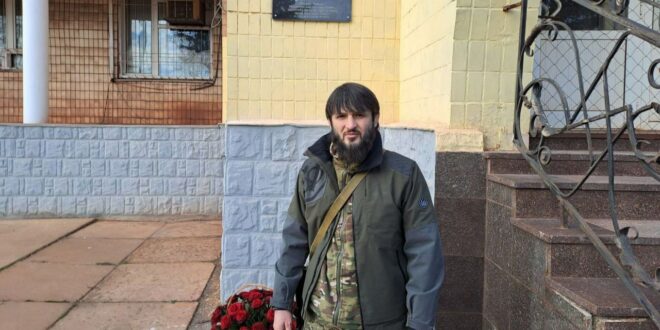As the prospect of a rapprochement between Ankara and Damascus becomes more imminent, the most extreme elements of Syria’s armed opposition have been feeling a sting of betrayal, accelerating a trend that, over the past year, has seen many jihadists relocate to Ukraine.
This is especially true for foreign militants, particularly those from Central Asia or the Caucasus.
On 12 January, Lebanese newspaper Al-Akhbar reported that after several months of disappearance, the well-known Chechen extremist and leader of the ‘Soldiers of the Caucasus’ militia, Abdel Hakim al-Shishani, has reappeared in Ukraine as a member of Kiev’s so-called ‘international legion,’ established in order to attract and recruit foreign fighters against Russia.
According to the report, there has recently been news of an increased number of foreign fighters leaving Syria to make their way over to the “new battlefield,” reinforced by “Turkiye’s lack of need for ‘jihadists’ on Syrian soil” and its “definite interest … to get rid of them.” This comes following recent talks aimed at reconciling Damascus and Ankara, over which the opposition has already expressed a great distaste for.
The report also highlights a leading role played by Turkish intelligence in facilitating this cross-country transfer of extremists, “at least during the first months of the Russian-Ukrainian war.” This could have been Ankara’s way of disposing of militants from Syria and clearing the way for a solution to the Syrian war (provided it was serious about reconciliation at the time, and still is). According to Al-Akhbar, Shishani himself passed through Turkiye on his way to the “new land of jihad,” just as he initially had on his way to join the war in Syria.
Syrian officials have also suggested Washington’s role in facilitating these transfers to Ukraine, as the US has been involved in the relocation of extremists between Syria, Iraq, Libya, and Afghanistan.
On 7 January, the official account of Ukraine’s intelligence agency posted a video on Twitter showing Shishani and a group of fighters engaging in clashes with Russian troops in the Ukrainian city of Bakhmut. The video essentially serves as propaganda designed specifically to attract extremist militants from Syria to Ukraine.
Shishani’s disappearance coincided with the establishment of recruitment centers in northern Syria designed to send fighters off to Ukraine, as Al-Akhbar reported in March last year.
Soon after the start of the Ukrainian war, hundreds of fighters from ISIS and Hayat Tahrir al-Sham (HTS), formerly the Al-Qaeda linked Nusra Front, began making their way to Ukraine to take part in a newer, more direct front against Russia.
On 1 March, before these reports began emerging, Syria’s Deputy Foreign Minister, Bashar al-Jaafari, predicted this.
“We, as a state, have evidence that the US military in Syria is transferring terrorists from one place to another, especially members of ISIS and Jabhat al-Nusra … So, one should not be surprised, and we do not exclude, that tomorrow ISIS terrorists will be sent to Ukraine,” he said.
If the plan for a restoration of ties between Syria and Turkiye is fruitful, and if Ankara chooses to officially abandon Syria’s armed opposition, which the extremists fear has already happened, then it is a likely possibility that the raging battlefield in Ukraine will emerge as a new safe haven for Syria’s jihadist movement.
 Eurasia Press & News
Eurasia Press & News


